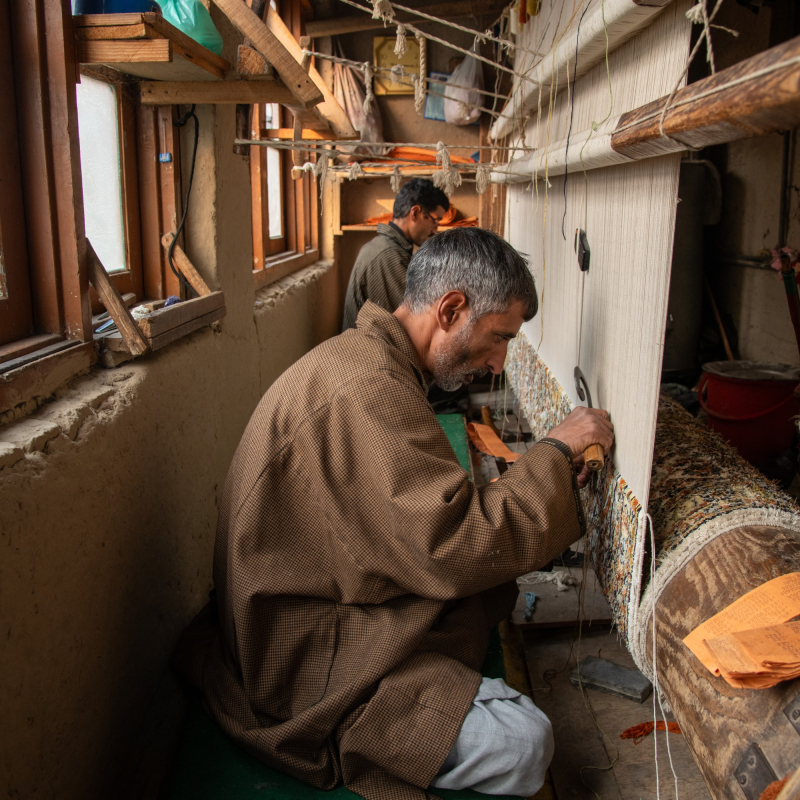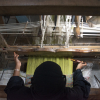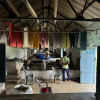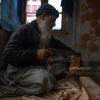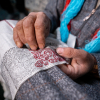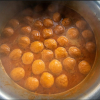Nestled amidst the Himalayas, Srinagar stands as a living testament to Kashmir’s vibrant handloom and handicraft traditions. These centuries-old craft traditions of the Valley are deeply interwoven with the region’s cultural identity, serving as both a livelihood for its people and a reflection of its rich history. From exquisite pashmina shawls to intricately designed carpets, Srinagar’s crafts showcase the unparalleled craftsmanship and creativity of its artisans.

Kani weaving includes patterns using wooden needles, a process that can take months or even years. (Picture Credits: Syed Muneeb Masoodi)
The legacy of Kashmiri handlooms and handicrafts dates back to ancient times, but it was the Mughal period that transformed these traditional crafts into refined art forms. Emperors like Akbar encouraged the weaving of pashmina shawls and established karkhanas (workshops) to train local artisans. Persian influences brought in by Mughal patronage led to the evolution of iconic crafts such as kani shawls and intricately patterned carpets. The colonial era introduced these exquisite crafts to the international market, generating unprecedented demand and appreciation for Kashmiri craftsmanship. This, in turn, subjected artisans to new pressures from commercial exploitation and market forces, challenges that would shape the future trajectory of these traditional arts.
Handloom Traditions of Srinagar
Pashmina Shawls: Known as the ‘soft gold’ of Kashmir, pashmina shawls are woven from the fine undercoat of the Changthangi goat found in Ladakh. Artisans in areas like Safa Kadal spin and weave the delicate threads by hand, a process that often takes months to complete. These shawls are adorned with intricate sozni embroidery, a technique that involves delicate needlework to create elaborate floral and paisley patterns. The artistry is further enhanced with tilla embroidery, which uses metallic threads of gold or silver to create raised, shimmering motifs, adding a luxurious touch. Additionally, aari work, known for its chain-stitch technique, is often used to outline motifs, while kashida embroidery offers rich, colourful designs that beautifully complement the shawl’s elegance. Together, these diverse embroidery styles elevate the shawls from simple functional wraps to true masterpieces of textile art. In the bustling lanes of Zaina Kadal, an elderly artisan recalls how pashmina shawls were tested by passing them through a ring. ‘If it fits through, it’s worthy of royalty,’ he smiles, his hands deftly working on an intricate design.
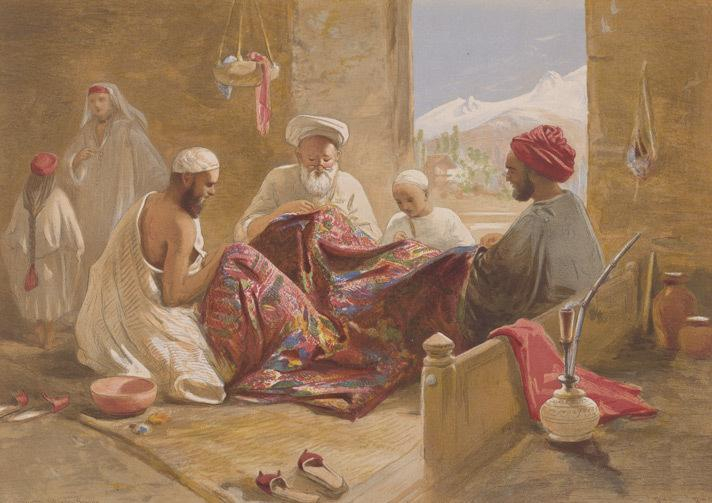
A family engaged in shawl making, 1867, chromolithograph by William Simpson. (Picture Credits: Wikimedia Commons)
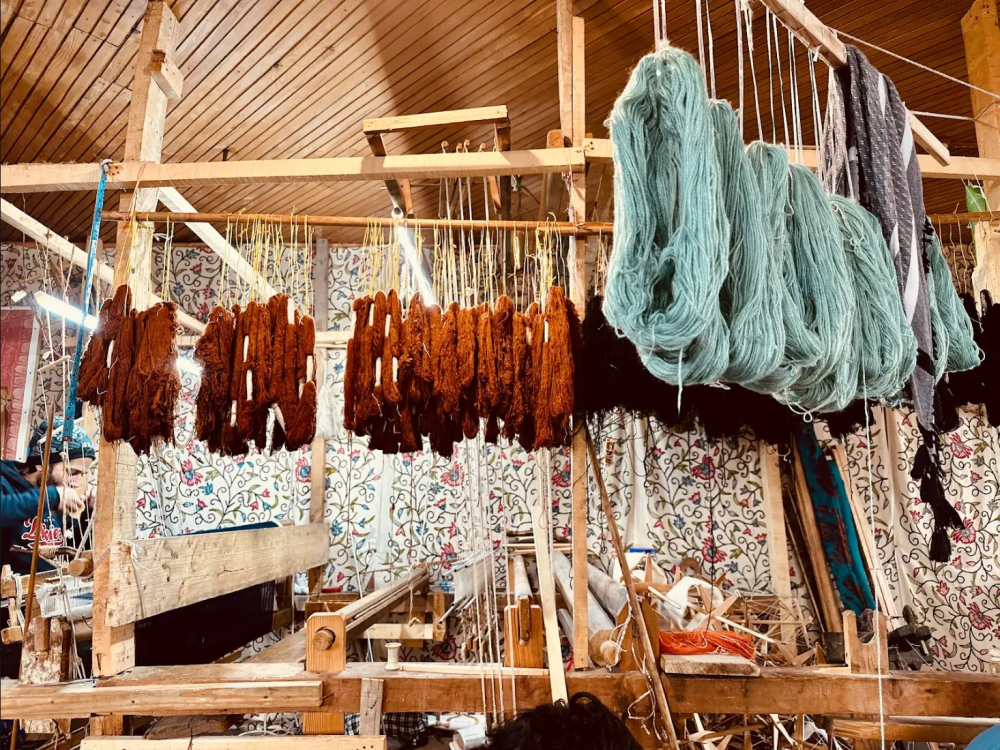
Yarns hanging in a handloom workshop, prepared for weaving. (Picture Credits: Taha Mughal)

Changthangi goats in Ladakh—sources of the fine pashmina fiber, prized for its warmth and softness. (Picture Credits: Wikimedia Commons)

A traditional loom used for weaving pashmina. (Picture Credits: Syed Muneeb Masoodi)
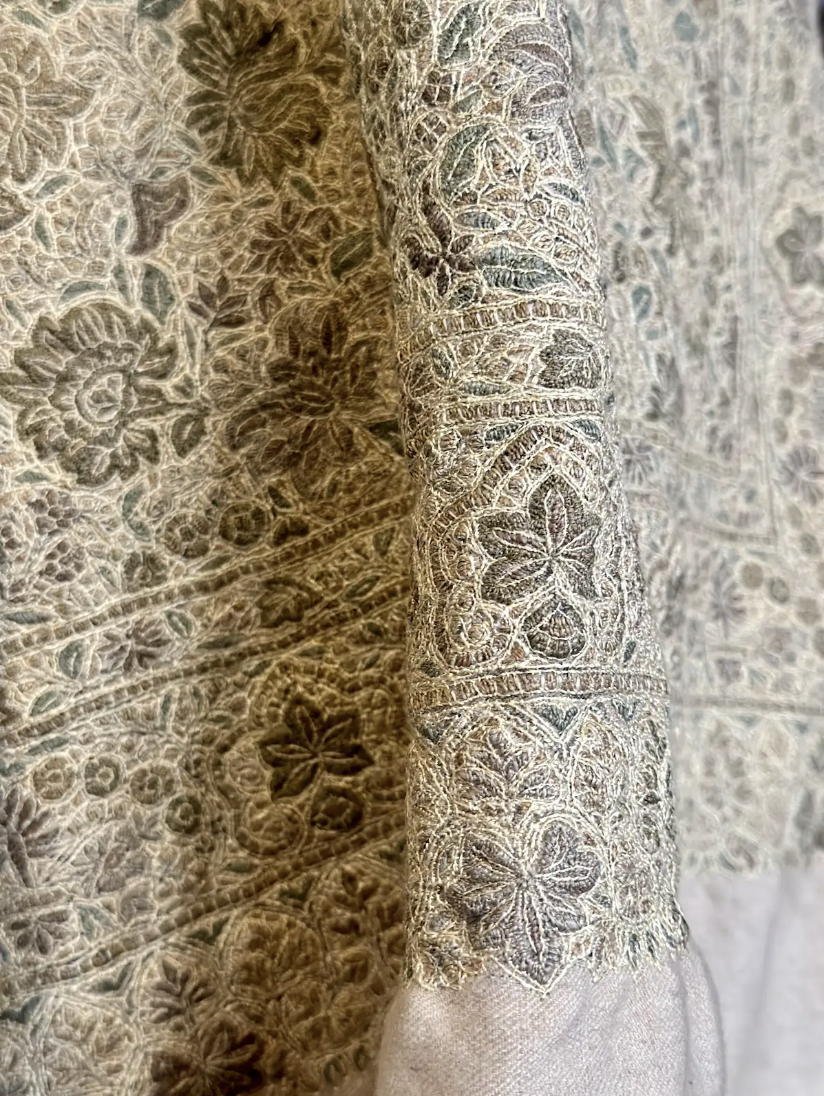
Sozni embroidery. (Picture Credits: Taha Mughal)
Kani Shawls: Originating from the picturesque village of Kanihama near Srinagar, kani shawls are a true masterpiece of craftsmanship. Using small wooden needles called kanis, skilled artisans weave intricate, nature-inspired patterns in vibrant colours. The process is painstakingly slow, with a single shawl sometimes taking months or even years to complete. Once regarded as priceless treasures in the Mughal courts, one legendary tale speaks of a shawl ordered by Emperor Jahangir that took years to weave, securing lifelong patronage for its master artisans. These shawls were not just garments but symbols of status and enduring artistry.
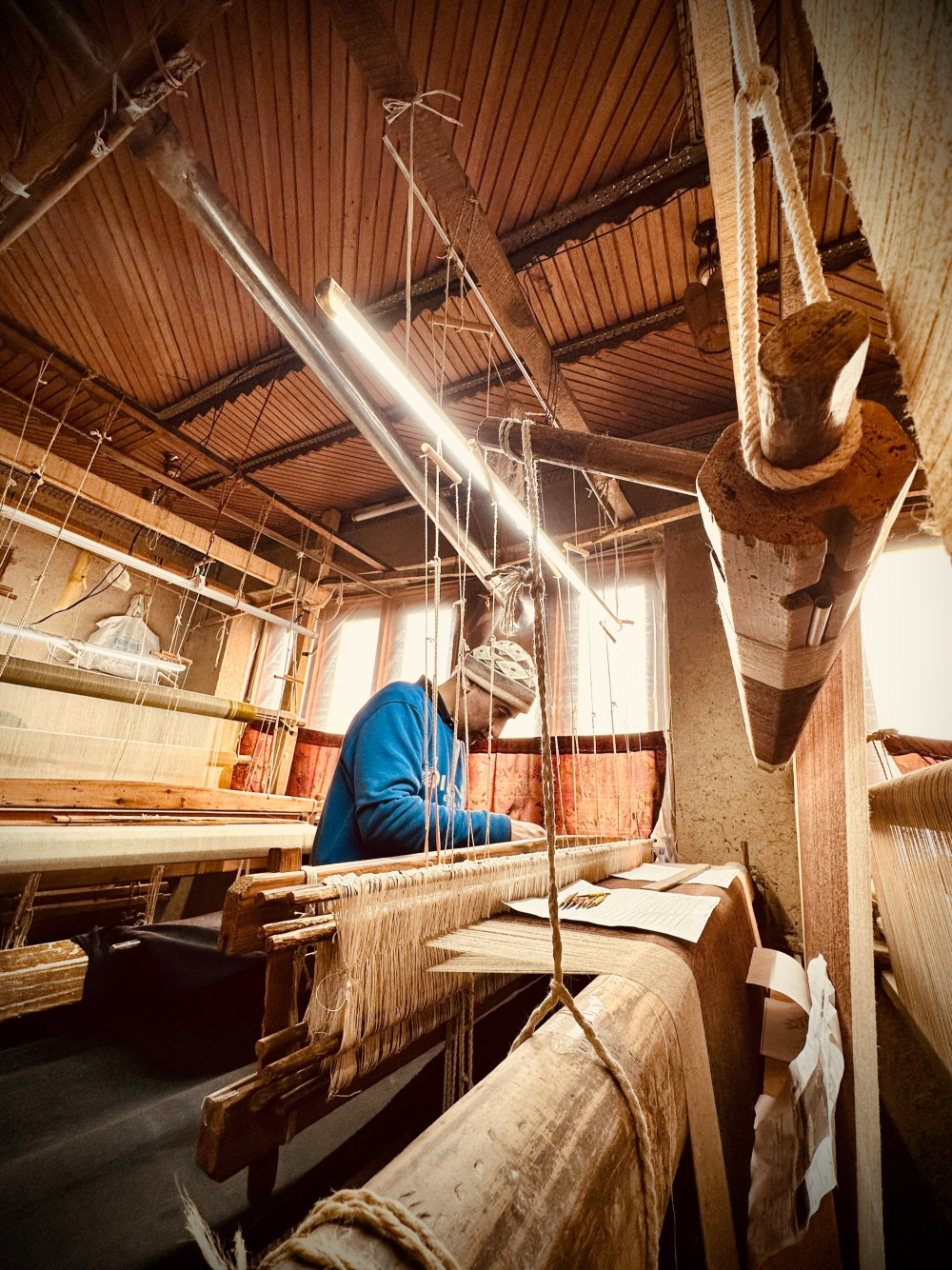
A weaver at a traditional loom in Safa Kadal. (Picture Credits: Taha Mughal)
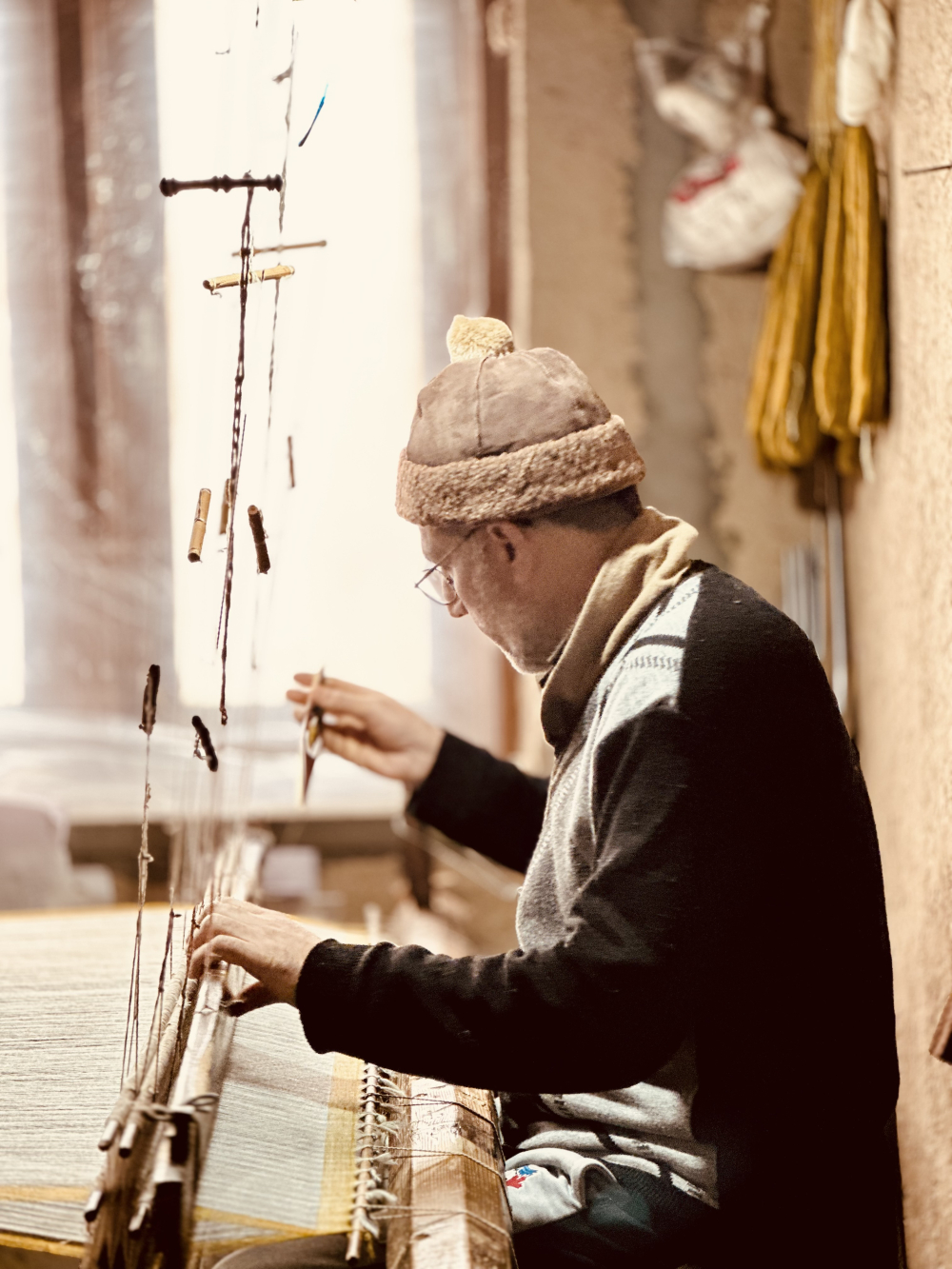
A weaver at a traditional loom in Safa Kadal. (Picture Credits: Taha Mughal)
Kalbaff: Hand-knotted carpets, locally known as kalbaff, are renowned for their intricate designs, blending Persian and Mughal influences, with motifs such as floral patterns, hunting scenes and Islamic calligraphy. The primary occupation of artisan families in neighbourhoods like Eidgah and Zaina Kadal, these carpets are highly prized for their durability and artistry, and their reputation for superior craftsmanship extends globally. One famous story from Eidgah recounts how when an artisan family presented such a carpet to Queen Victoria, its complex design so impressed the royal court that it solidified Kashmir’s standing as a hub of extraordinary craftsmanship. The origins of this craft trace back to the fifteenth century during the reign of Sultan Zain-ul-Abidin, who invited skilled weavers from Persia and Central Asia to Kashmir. These artisans brought with them knotting techniques that transformed local weaving practices, leading to the creation of these exquisite carpets. The craft reached its zenith under the Mughal Empire, becoming a treasured possession in royal courts.
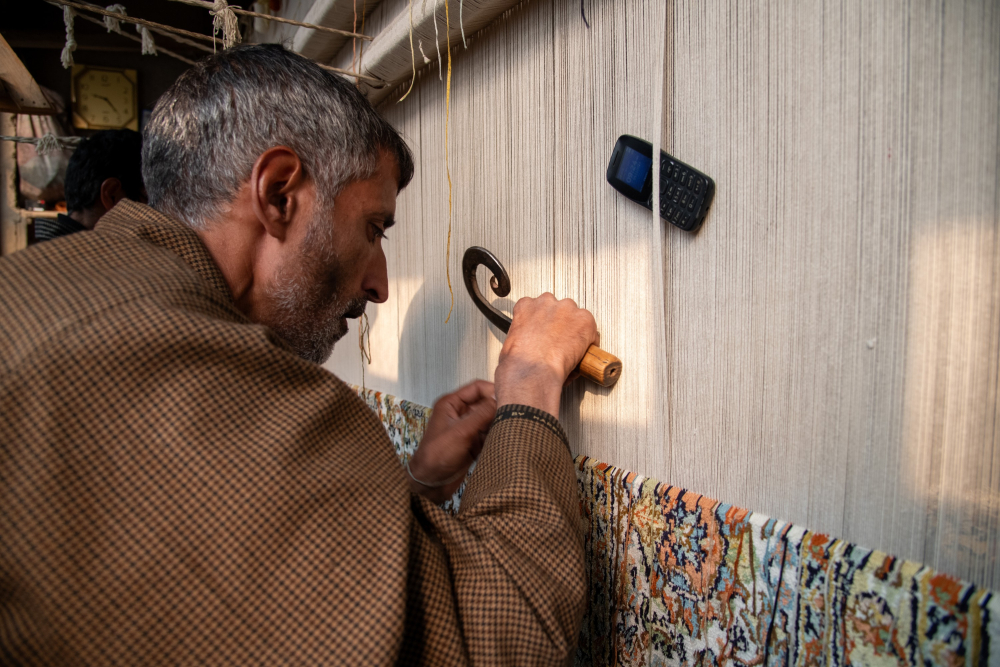
A weaver meticulously knots a kalbaff, preserving a centuries-old Kashmiri tradition. (Picture Credits: Syed Muneeb Masoodi)
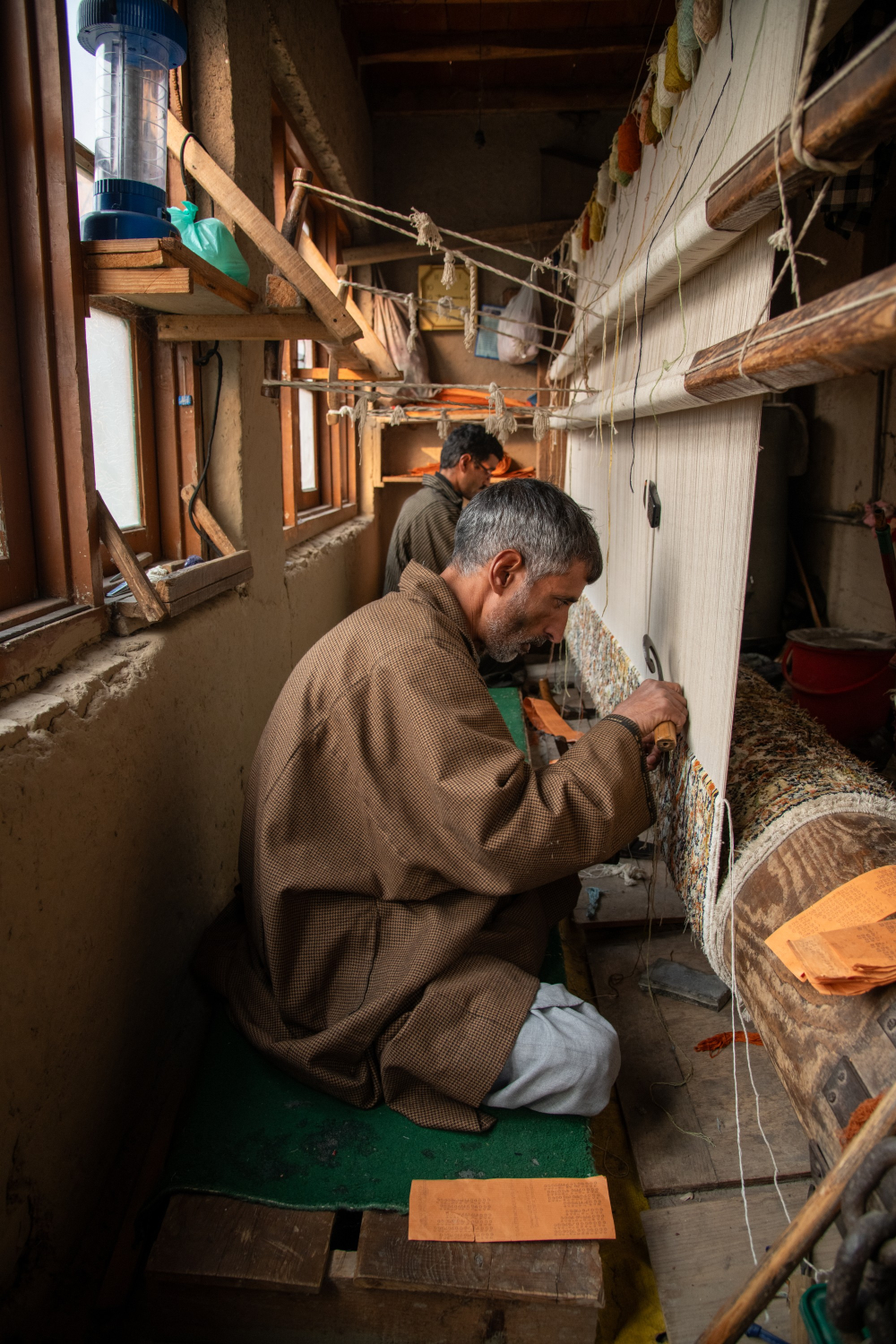
Hand-knotting a kalbaff—a craft passed down through generations in Eidgah and Zaina Kadal. (Picture Credits: Syed Muneeb Masoodi)
Namda and Gabba: These traditional felted wool rugs are vibrant and durable, crafted by artisans in Srinagar’s Downtown area. While namda involves felting wool into intricate patterns, gabba uses recycled fabrics to create colourful and functional rugs.
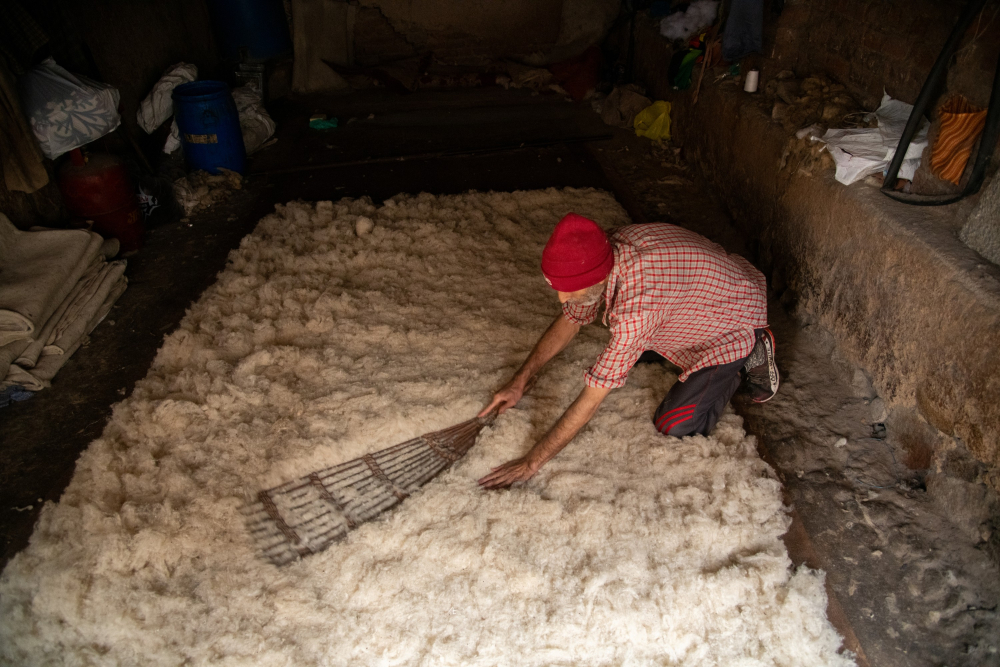
A craftsman prepares wool for traditional namda felting. (Picture Credits: Syed Muneeb Masoodi)
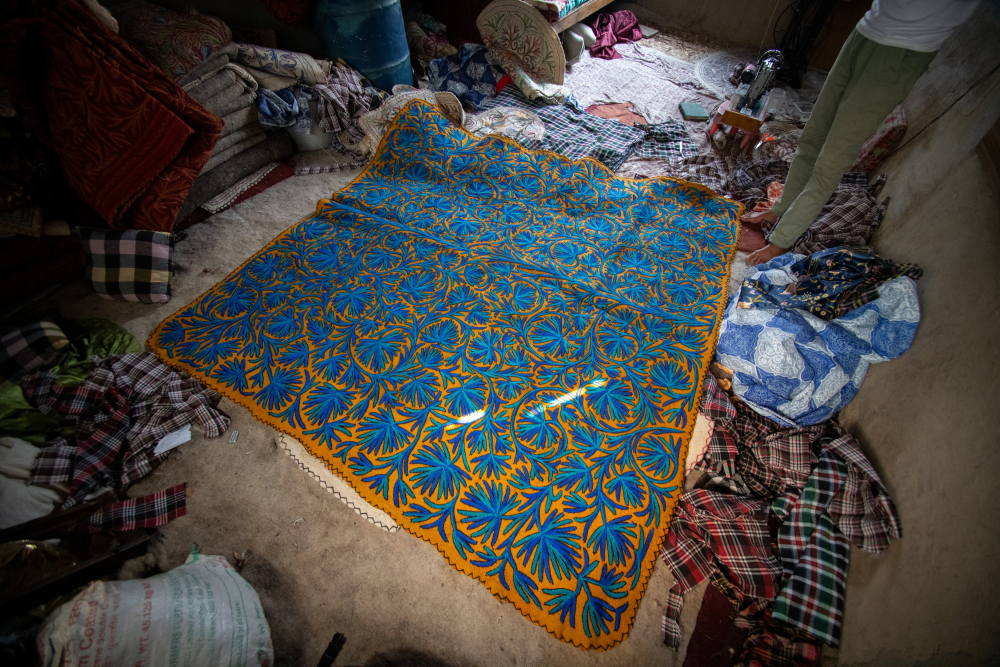
Gabba, made from recycled fabrics, transforms old textiles into vibrant, appliqué rugs. (Picture Credits: Syed Muneeb Masoodi)
Today, these ancient crafts face an existential challenge: while their artistic allure endures, they struggle against machine-made alternatives and diminishing market demand.
Handicrafts Traditions of Srinagar
Papier-Mâché: This fascinating craft, introduced in the fifteenth century by Persian artisans, involves the skilful moulding of paper pulp into decorative pieces, each one painted with intricate floral and geometric motifs. Artisans from areas like Nowshera and Rainawari have long carried on this tradition, creating stunning vases, boxes and ornaments often inspired by the natural beauty surrounding Srinagar. One such artist, Zahida Begum, who works in a small workshop in Nowshera, fondly recalls how her grandfather’s delicate ornaments were once featured in prestigious European exhibitions, earning global acclaim for the craft. Today, papier-mâché remains one of the most sought-after souvenirs by tourists.
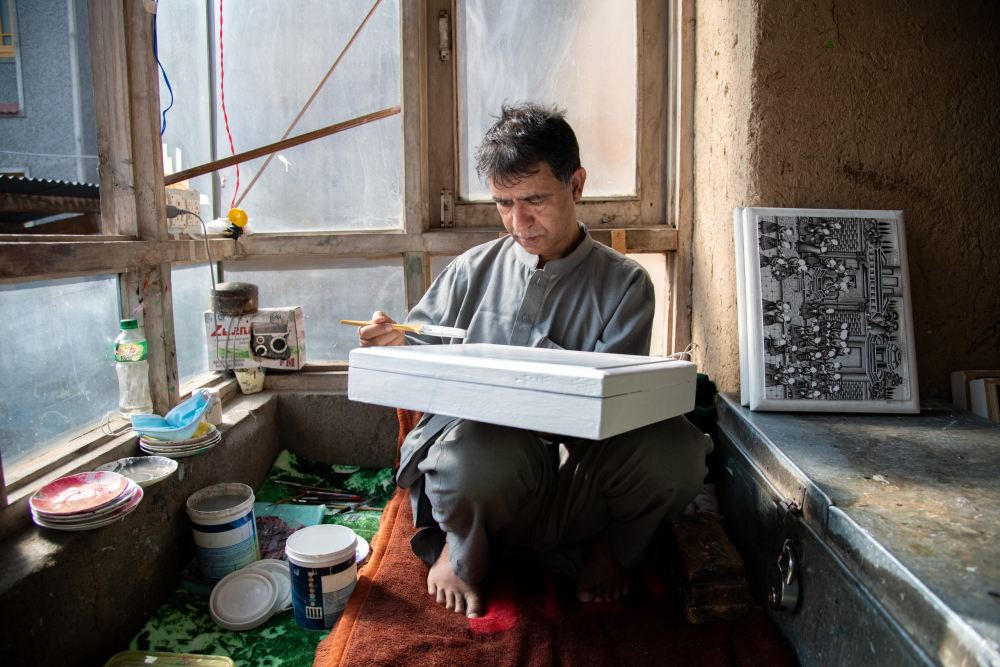
An artisan paints papier-mâché using fine brushes and natural pigments. (Picture Credits: Syed Muneeb Masoodi)
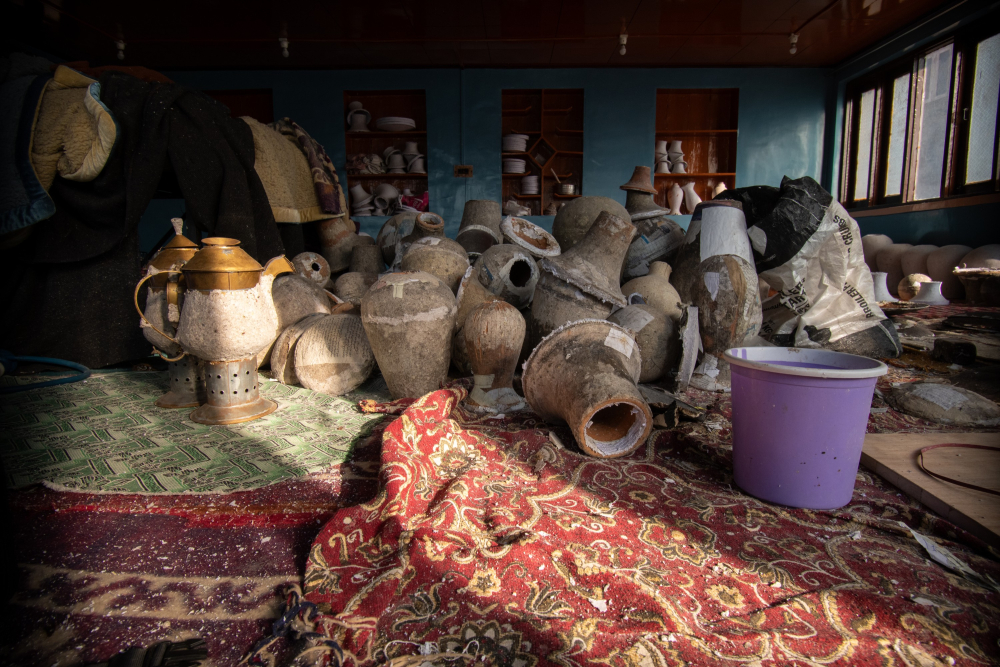
Papier-mâché preparation involves soaking, pulping, and moulding paper pulp into decorative objects before drying and hand-finishing. (Picture Credits: Syed Muneeb Masoodi)
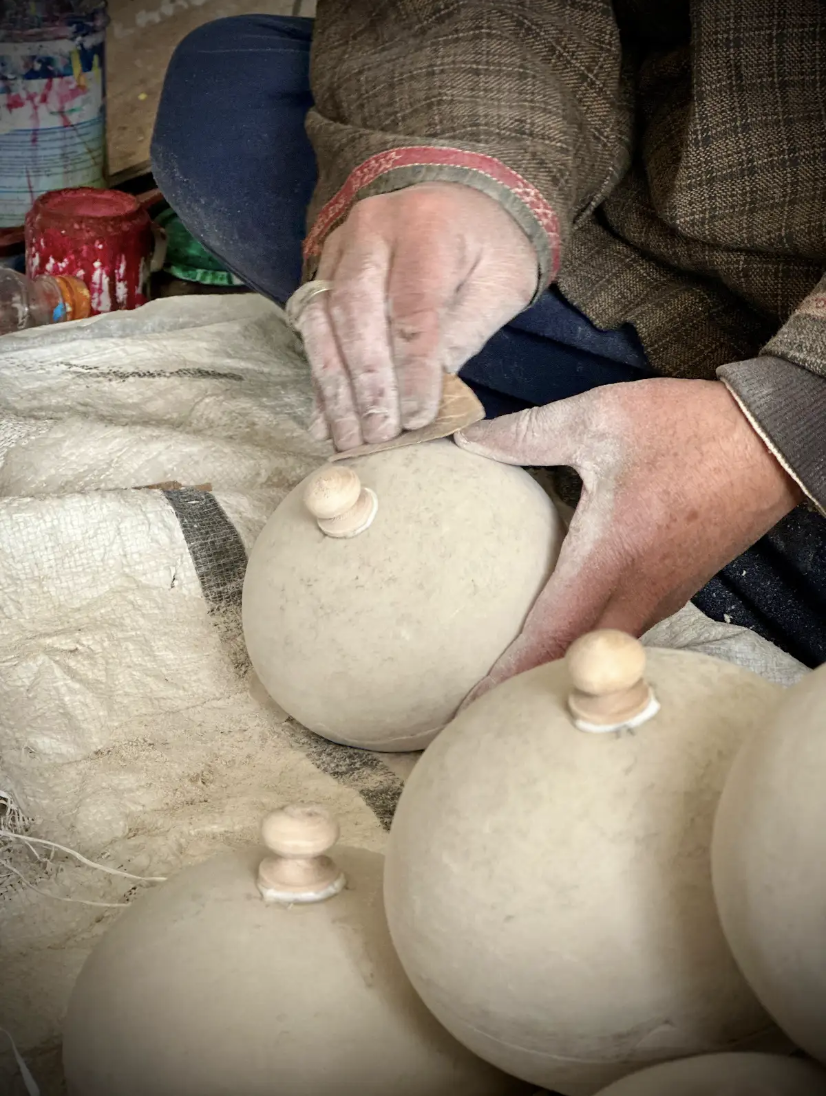
Papier-mâché objects getting ready for painting. (Picture Credits: Taha Mughal)
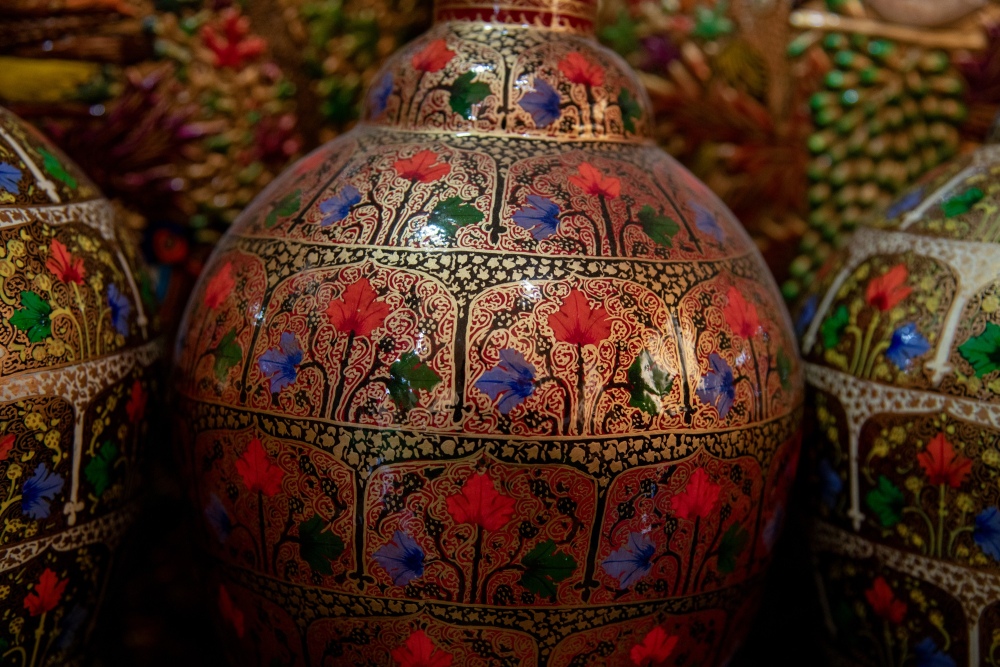
Vibrant hues of gold, red, and turquoise, made from natural pigments, enhance the floral and arabesque patterns adorning these papier-mâché artifacts. (Picture Credits: Syed Muneeb Masoodi)
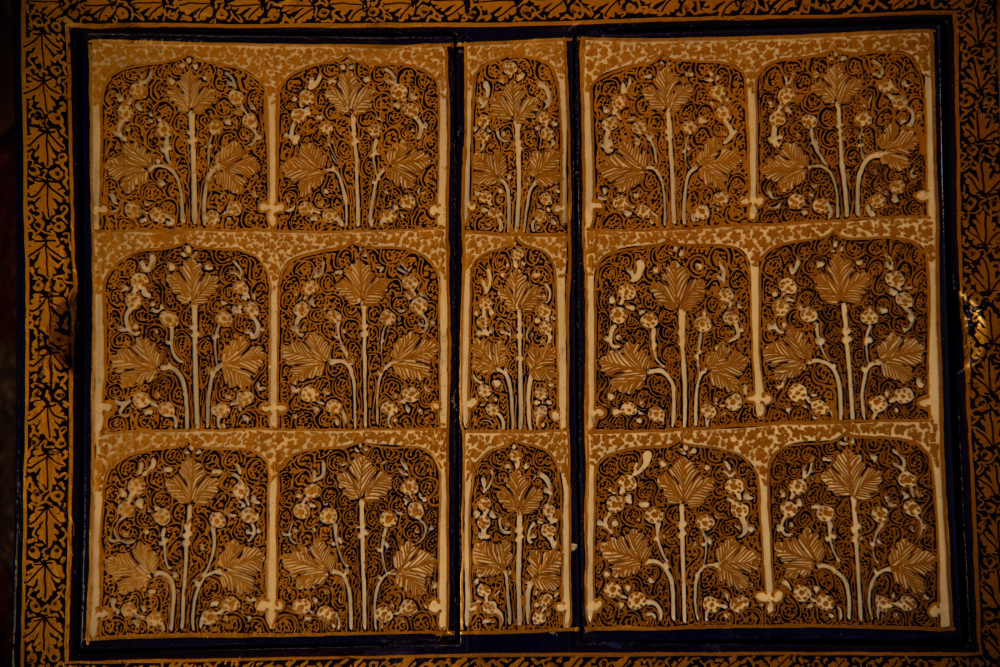
Papier-mâché artifacts featuring symmetrical geometric and floral motifs, painted in vibrant hues and gold detailing. (Picture Credits: Syed Muneeb Masoodi)
Walnut Wood Carving: Walnut wood carving is a legacy craft deeply embedded in Kashmir’s artistic traditions. Skilled artisans, primarily from areas like Rajbagh and Lal Bazar, are masters of this craft, creating intricately carved furniture and home decor that beautifully blend traditional Kashmiri motifs with modern design sensibilities. From ornate tables to elegant mirrors, these pieces are not only functional but are true works of art, showcasing the precision and expertise passed down generations. A fascinating anecdote from Lal Bazar tells of a walnut tree planted decades ago that inspired generations of carvers. Its wood has been used to craft everything from royal thrones to modern masterpieces, symbolising the continuity and evolution of this extraordinary craft.
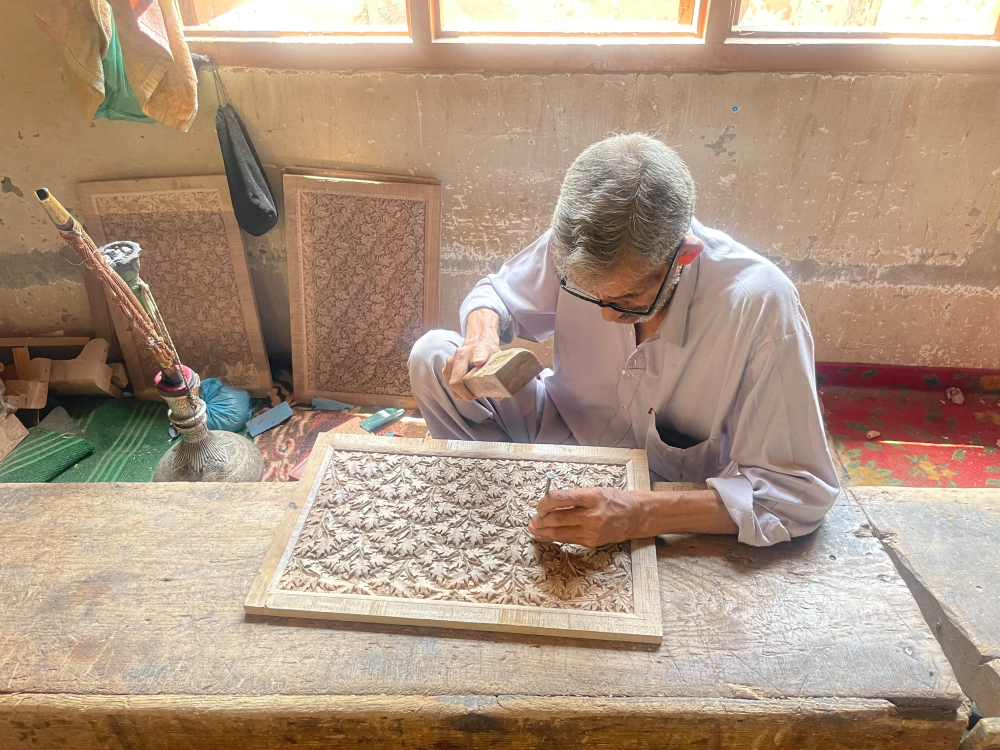
Artisans in Lal Bazar skillfully carve walnut wood using traditional tools. (Picture Credits: Stuti Mishra)
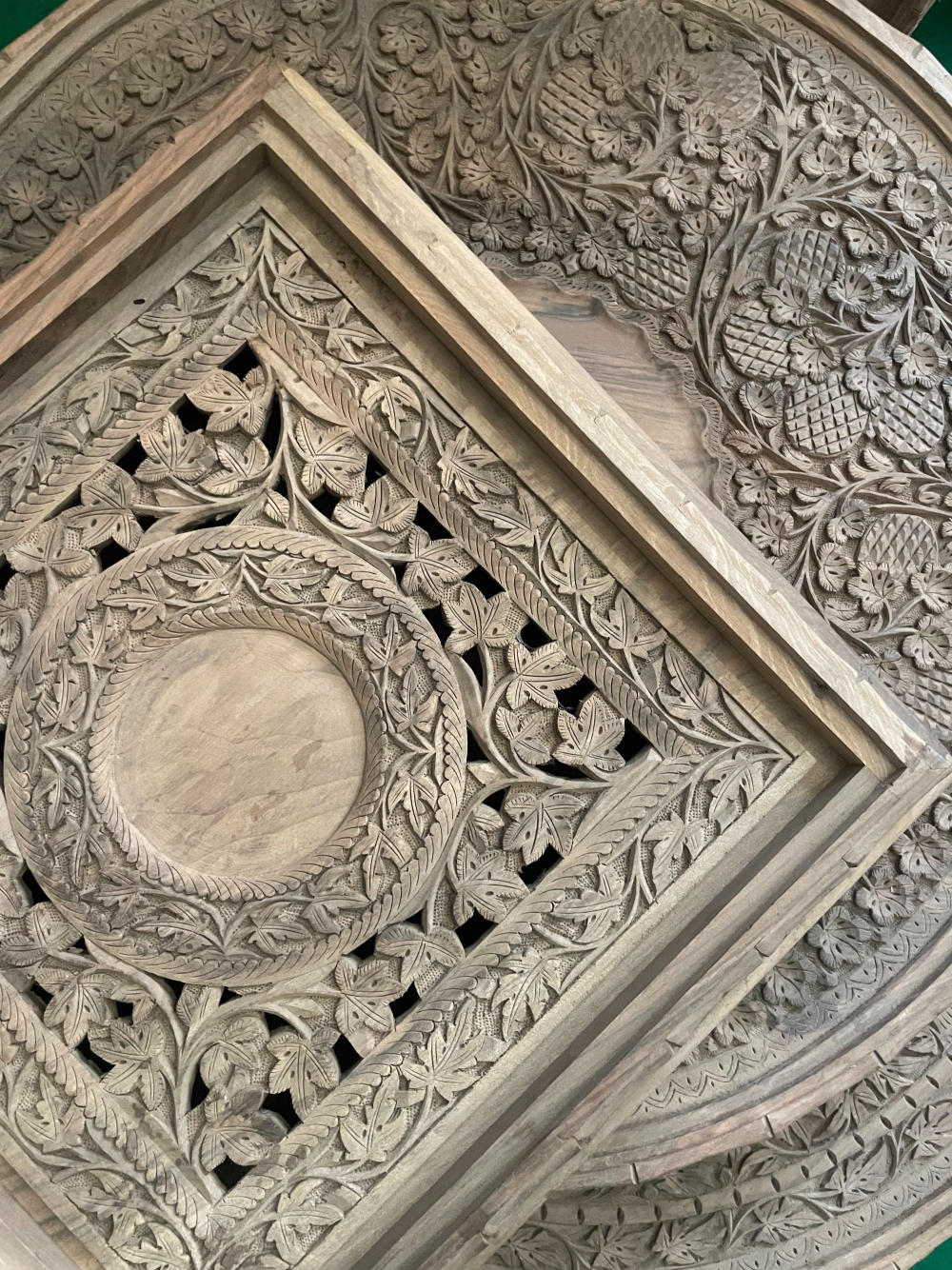
Inside a walnut wood workshop in Lal Bazar where artisans craft ornate furniture and decorative pieces. (Picture Credits: Stuti Mishra)
Aari Embroidery: Aari embroidery, predominantly practised by women in neighbourhoods like Kralpora and Hazratbal, is one of Kashmir’s most-celebrated crafts. This intricate form of needlework features elaborate floral and paisley patterns meticulously stitched onto shawls, garments and other textiles. The chain stitch technique, combined with crewel embroidery, is also widely practised in regions like Nishat and Soura. The embroidery not only adds beauty but also reflects the rich cultural heritage of Kashmir, blending traditional motifs with contemporary aesthetics.
Copperware: The making of copper wares, or taan kaam, is an integral part of Kashmiri heritage, with artisans from Zadibal and Saraf Kadal crafting beautifully engraved items like samovars (tea kettles), trays and bowls. These pieces are not only functional but also prized for their intricate patterns, often seen at Kashmiri weddings and festive occasions. An interesting anecdote from Zadibal recalls a samovar presented to a visiting dignitary, who described it as ‘a treasure of warmth’, highlighting the cultural significance of these copper creations in Kashmiri hospitality.

Taan kaam, an age-old copper engraving craft, transforms vessels and décor with floral and calligraphic designs, etched by skilled artisans. (Picture Credits: Syed Muneeb Masoodi)
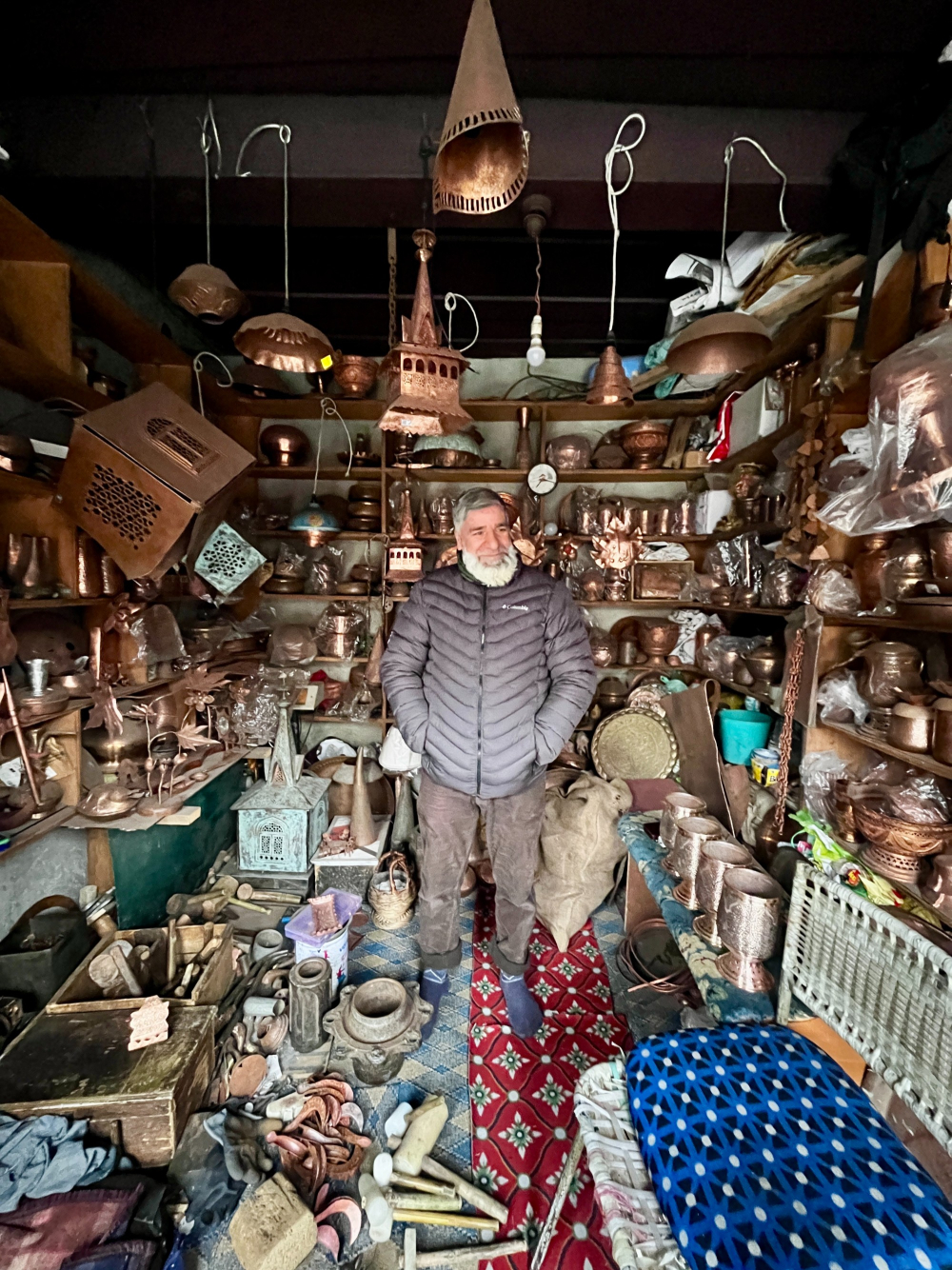
A copperware shop displaying handcrafted samovars, trays, and utensils, each adorned with traditional taan kaam engravings. (Picture Credits: Taha Mughal)
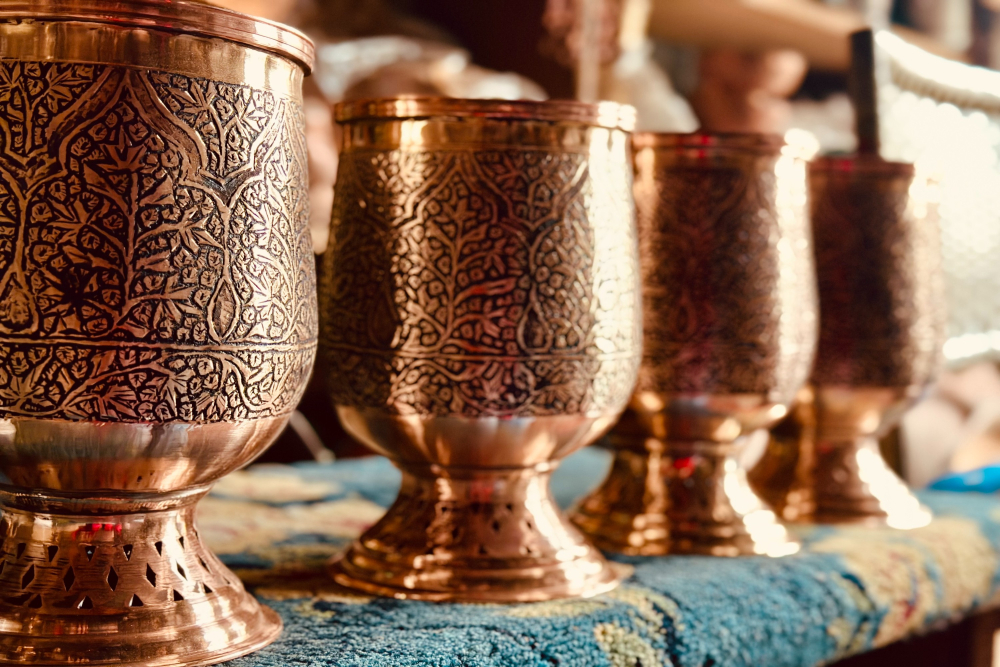
Copper Vases with traditional taan kaam engravings. (Picture Credits: Taha Mughal)
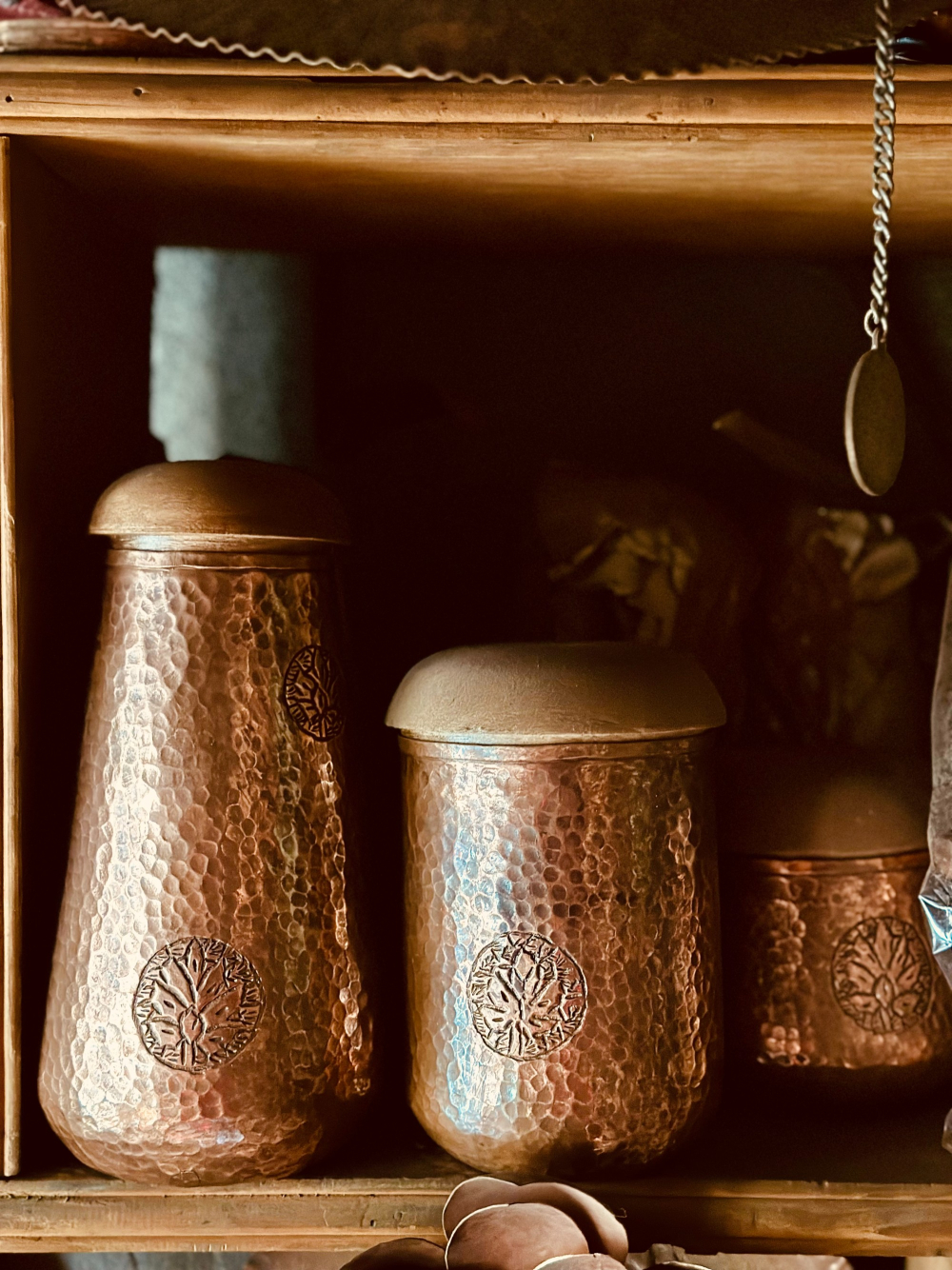
Copper Vases with traditional taan kaam engravings. (Picture Credits: Taha Mughal)
Khatamband: A unique architectural craft, khatamband involves the intricate assembling of small pieces of wood into geometrical patterns to create ceilings without using nails. Practised in areas like Rainawari and Nowhatta, this craft combines aesthetic appeal with engineering ingenuity. A master craftsman in Rainawari recalls how khatamband was used to adorn royal residences. ‘Each ceiling tells a story,’ he says, pointing to a design inspired by the iconic Chinar leaves.
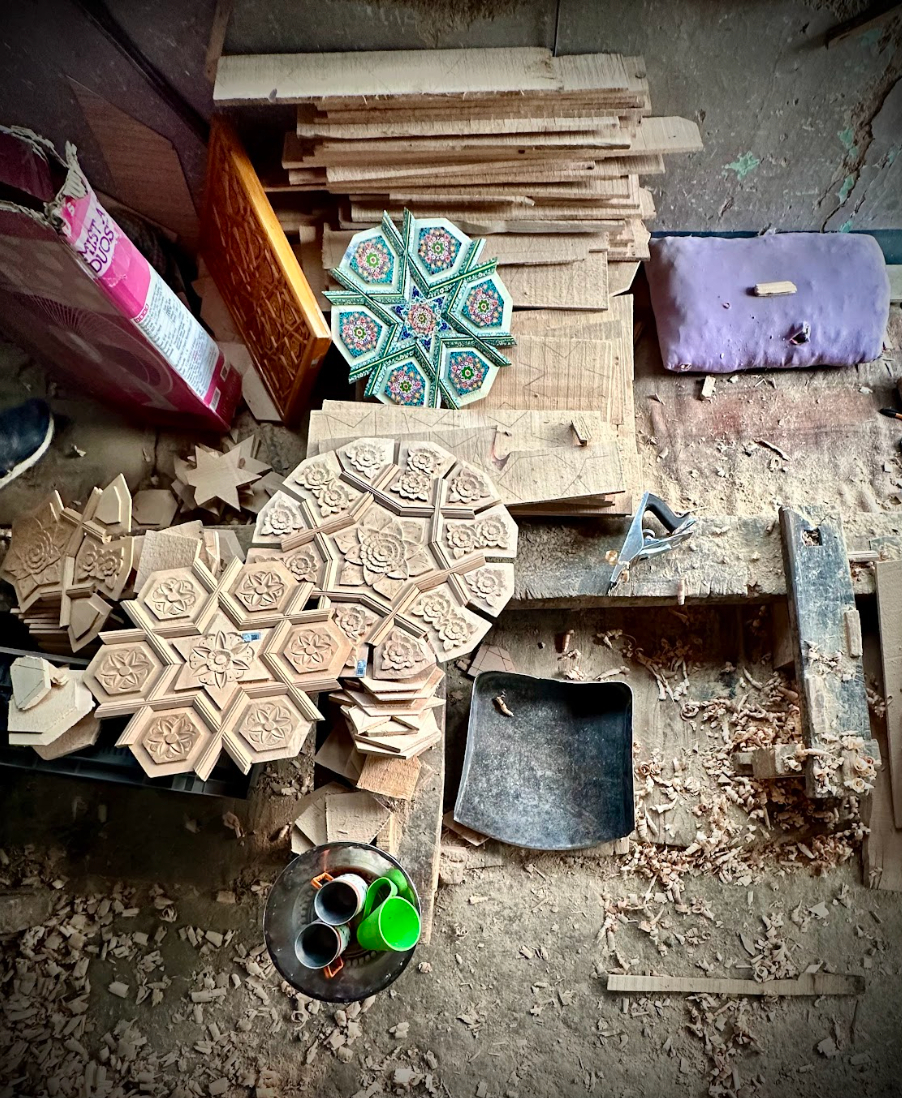
Khatamband ceilings—crafted without nails, featuring interlocking wooden patterns. (Picture Credits: Taha Mughal)
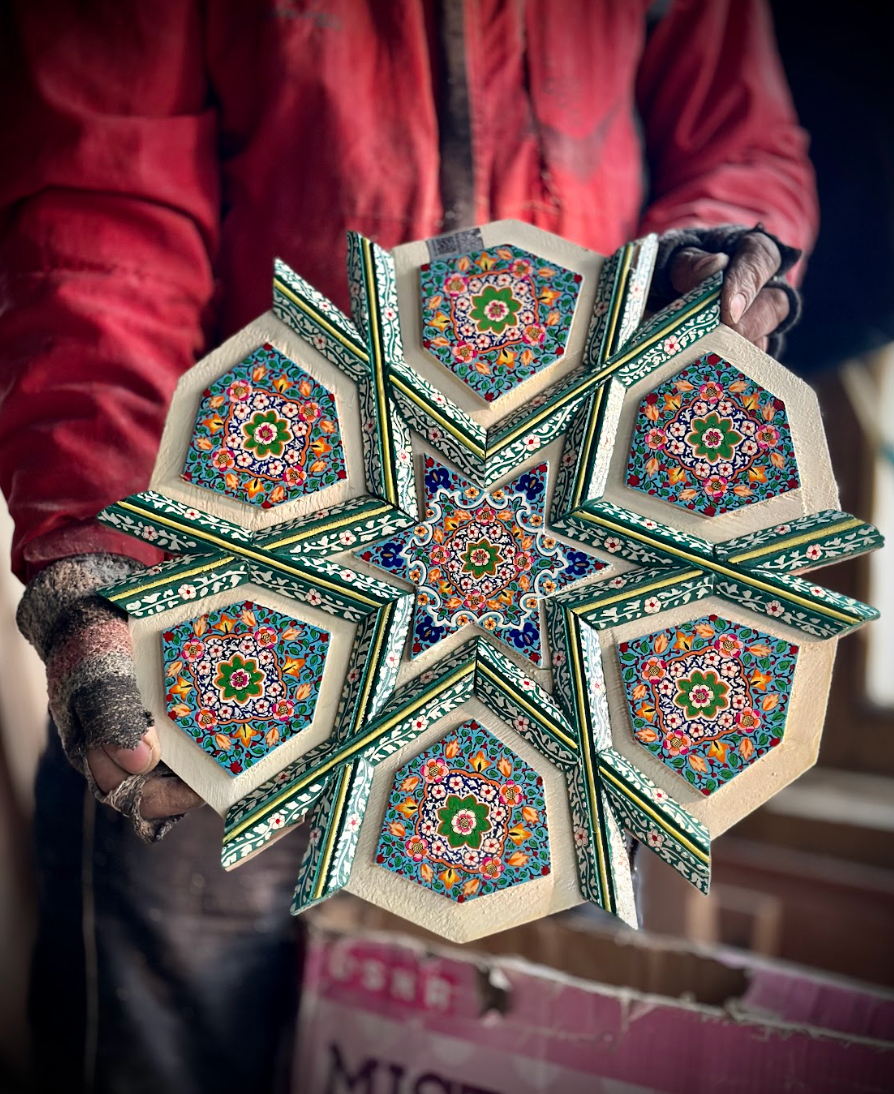
Khatamband ceilings—crafted without nails, featuring interlocking wooden patterns. (Picture Credits: Taha Mughal)
Cultural Significance and Global Appeal
Kashmiri crafts are deeply rooted in the region’s cultural identity and continue to hold immense global appeal. Pashmina shawls, often gifted during weddings, symbolise warmth, prestige and the rich legacy of Kashmir’s textile artistry. Similarly, namda rugs are not only household staples but also bear motifs symbolising prosperity and spirituality. Many of these crafts, like pashmina and Kashmiri carpets, are now GI-tagged, further solidifying their cultural value. Today, these crafts have earned a worldwide reputation for their beauty, with international markets recognising their artistry and quality as well.
Conclusion
Srinagar’s handlooms and handicrafts are far more than products; they are reflections of the city’s soul and enduring spirit. The resilience of Srinagar’s artisans is embodied in stories like that of Zahida Begum, a papier-mâché artist from Nowshera who has trained over 100 women, empowering them with the skills to continue this traditional craft. Similarly, Bashir Ahmad Wani, a carpet weaver from Rainawari, speaks of how his craft helped his family endure difficult times. In Kralpora, a women’s cooperative has found international recognition for their aari-embroidered garments. These artisans have not only preserved their heritage but also demonstrated remarkable resilience in the face of challenges.
As these handloom and handicraft traditions navigate modern challenges, it is vital to continue celebrating and supporting the artisans who keep this heritage alive. Through initiatives like education, festivals and global outreach, Srinagar’s legacy of artistry can inspire future generations and thrive in an ever-evolving world.
This essay has been created as part of Sahapedia's My City My Heritage project, supported by the InterGlobe Foundation (IGF).
